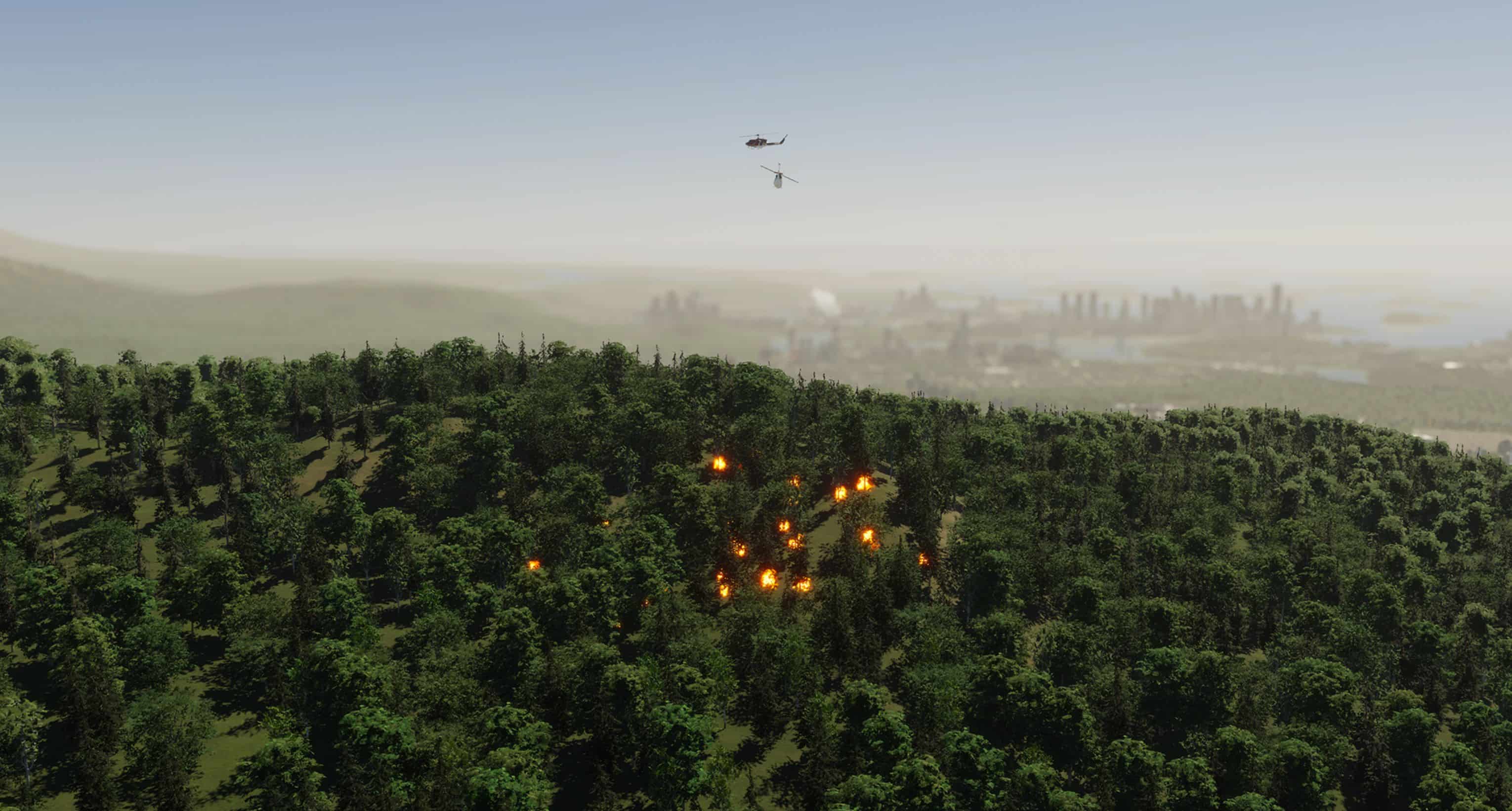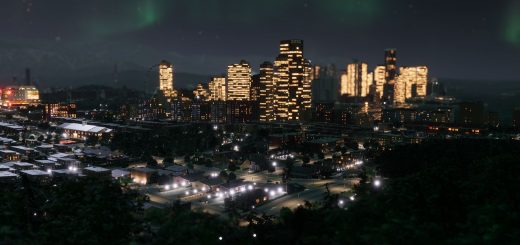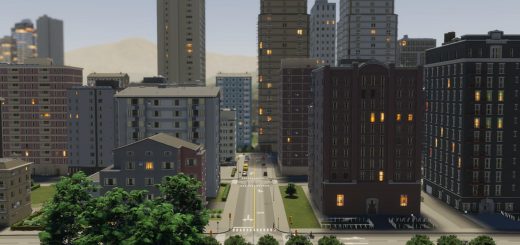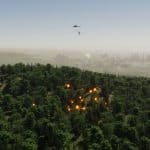
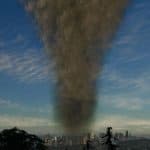
Cities Skylines 2: Forest Fire, Hail Storm, Tornado
In Cities: Skylines II, players are introduced to an additional layer of unpredictability: natural disasters. These calamities add spontaneity and complexity to the gaming experience. For those who prefer a more predictable gaming environment, there’s an option to toggle these disasters on or off, either when setting up a new game or when loading an existing one. Though players can adopt preventive measures using disaster control systems, the sheer force of nature ensures that these disasters can’t be entirely sidestepped.
These cataclysms range in intensity. On one hand, they might merely instigate traffic mishaps, which subsequently escalate into traffic congestion. This can potentially delay the city’s emergency services from addressing the disaster promptly. On the more severe side, they can inflict direct harm to both infrastructure and residents. The aftermath may strain healthcare, emergency response, and other critical city services. Additionally, businesses and essential services based in the impacted structures could face temporary shutdowns.
For players keen on keeping tabs on these disasters, the game offers an Event Journal, conveniently located in the main user interface’s right panel. This journal meticulously logs each disaster event, capturing details about its nature, the time of occurrence, and its subsequent consequences. This archive serves as a historical record, enabling players to reflect on past challenges and strategize better for the future.
FOREST FIRE
In all climatic conditions, forest fires are a potential threat. However, factors like low rainfall and high temperatures can amplify the likelihood of these fires breaking out. For instance, prolonged dry spells elevate the risk of a forest blaze. If such a fire draws near to urban areas, it can swiftly spread to structures, triggering building fires and causing widespread disruption in the city. Hence, it’s crucial to manage and control these fires to shield the city from damage.
To mitigate the risk of forest fires, players can strategically position Firewatch Towers across the map. These towers not only reduce the chances of a forest fire outbreak but also enhance the speed at which firefighters can respond to any blaze within their operational radius, thereby minimizing potential damages. While fire trucks are adept at tackling fires along the roadways, certain areas remain inaccessible to them. To address such scenarios, incorporating a Firefighting Helicopter Depot in your city’s layout is beneficial. These helicopters can swiftly reach and douse flames in areas that are beyond the reach of conventional fire trucks.
HAIL STORM
In conditions that are chilly but not entirely freezing, hail storms can emerge as a potential threat. These storms, characterized by falling pellets of ice, inflict tangible harm to structures, though they don’t lead to total destruction. Post-storm, the affected buildings necessitate repairs. The funds and resources allocated for these restorative actions are sourced from the local residents, which otherwise would have been channeled towards routine maintenance and building upgrades. Additionally, hail storms pose risks on the roads, potentially leading to vehicular accidents that can disrupt regular traffic movement. While there’s no pressing need for citizens to evacuate during such storms, they generally exhibit a preference to stay sheltered indoors until the weather clears.
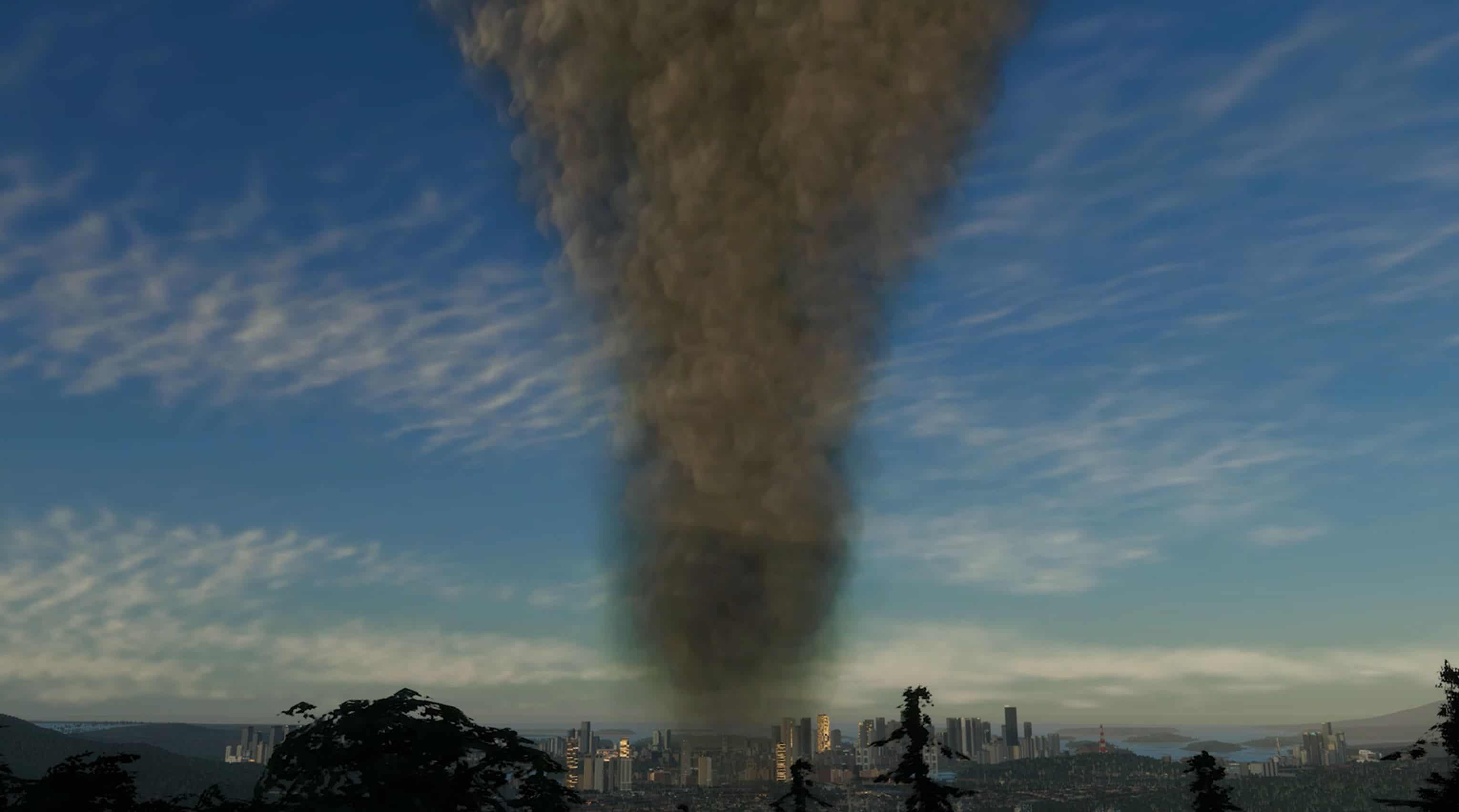
TORNADO
The Tornado stands out as the most catastrophic natural calamity in Cities: Skylines II. As it barrels through your city, it poses severe threats to inhabitants, vehicles, and structures alike. The storm’s ferocious winds can cause significant damage to buildings, with some even being leveled to the ground. In its wake, residents might suffer injuries or, in unfortunate cases, lose their lives, while the areas it targets often witness a spike in vehicular mishaps.
For ensuring maximum preparedness against such extreme events, it’s highly advisable to strategically position both Small and Large Emergency Shelters throughout your city, ensuring they’re accessible to all. The game introduces the Early Disaster Warning System – a proactive tool designed to detect impending calamities. This system alerts residents in advance, allowing them ample time to seek refuge in shelters. As part of the emergency protocol, citizens will swiftly move towards these safety zones. Notably, the large shelters are equipped with special evacuation buses that are activated simultaneously with the issuance of an evacuation command. These buses, while planning their routes, give precedence to areas with high population density and vital infrastructure like schools, medical clinics, and hospitals.
And with that, we wrap up this edition of our development diary. We trust you found our insights on weather patterns and seasonal changes engaging. Regardless of your choice to activate the disaster feature, it’s evident that weather plays a pivotal role in shaping your city’s trajectory, and your chosen map will throw unique challenges your way. Which aspect of our update intrigues you the most? We’re eager to hear from you! Stay tuned, as next week we’ll delve deep into the intricate dynamics of your city’s Economy & Production mechanisms.

